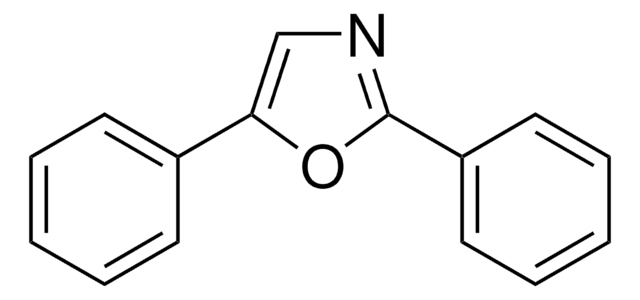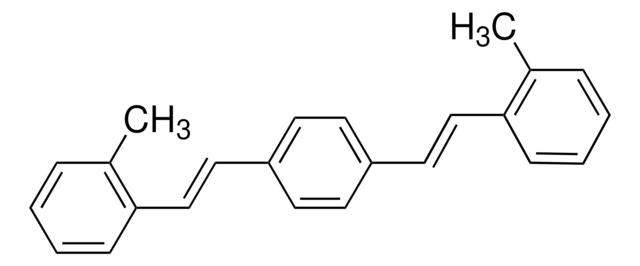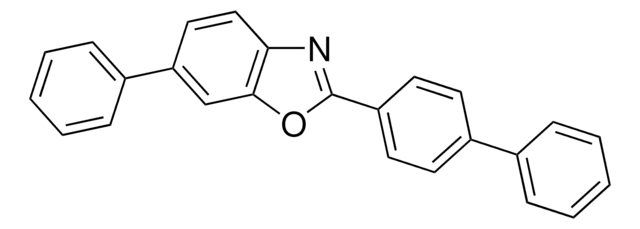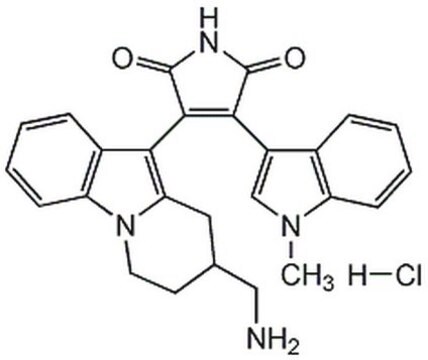P3754
1,4-Bis(5-Phenyl-2-Oxazolyl)Benzen
BioReagent, suitable for scintillation
Synonym(e):
2,2′-p-Phenylen-bis-(5-phenyloxazol), Di-(phenyl-5-oxazolyl-2)-1,4-benzol, POPOP
About This Item
Empfohlene Produkte
Produktlinie
BioReagent
Qualitätsniveau
Form
powder
mp (Schmelzpunkt)
242-246 °C (lit.)
Eignung
suitable for scintillation
SMILES String
c1ccc(cc1)-c2cnc(o2)-c3ccc(cc3)-c4ncc(o4)-c5ccccc5
InChI
1S/C24H16N2O2/c1-3-7-17(8-4-1)21-15-25-23(27-21)19-11-13-20(14-12-19)24-26-16-22(28-24)18-9-5-2-6-10-18/h1-16H
InChIKey
MASVCBBIUQRUKL-UHFFFAOYSA-N
Suchen Sie nach ähnlichen Produkten? Aufrufen Leitfaden zum Produktvergleich
Allgemeine Beschreibung
Anwendung
Leistungsmerkmale und Vorteile
- High fluorescence quantum yield.
- High molar absorptivity.
- Large Stokes Shift.
- High Photostability in most organic solvents.
Ähnliches Produkt
Signalwort
Warning
H-Sätze
Gefahreneinstufungen
Acute Tox. 4 Oral - Eye Irrit. 2
Lagerklassenschlüssel
11 - Combustible Solids
WGK
WGK 2
Flammpunkt (°F)
Not applicable
Flammpunkt (°C)
Not applicable
Persönliche Schutzausrüstung
dust mask type N95 (US), Eyeshields, Gloves
Analysenzertifikate (COA)
Suchen Sie nach Analysenzertifikate (COA), indem Sie die Lot-/Chargennummer des Produkts eingeben. Lot- und Chargennummern sind auf dem Produktetikett hinter den Wörtern ‘Lot’ oder ‘Batch’ (Lot oder Charge) zu finden.
Besitzen Sie dieses Produkt bereits?
In der Dokumentenbibliothek finden Sie die Dokumentation zu den Produkten, die Sie kürzlich erworben haben.
Kunden haben sich ebenfalls angesehen
Unser Team von Wissenschaftlern verfügt über Erfahrung in allen Forschungsbereichen einschließlich Life Science, Materialwissenschaften, chemischer Synthese, Chromatographie, Analytik und vielen mehr..
Setzen Sie sich mit dem technischen Dienst in Verbindung.








